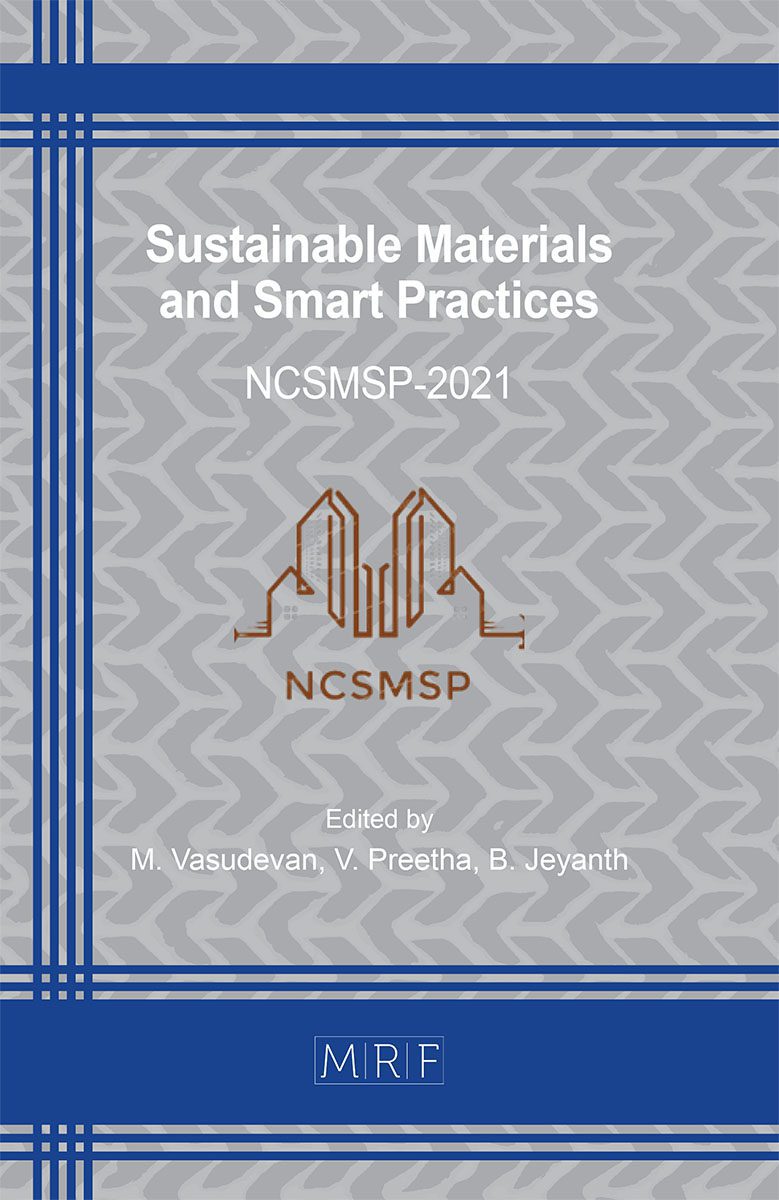Experimental Investigation on Partial Replacement of Cement with Metakaoline, Fly Ash and Silica Fume in Concrete
C. Pradeep Kumar, L. Anandhi
download PDFAbstract. The process of construction begins some thousand years ago and the monuments that we are seeing are the proof for that. The materials that are being used in the construction some thousand years ago are not the same which are being used nowadays. The construction materials get modified and new inventions are taking place due to the continuous research. The scope of this project is to make building materials sustainable and to make them eco-friendly. In the olden days lime was used as a mortar and now it’s being replaced by cement. But still research is going on to make better binding materials to make construction reliable. As an initiative, in our project we are going to partially replace cement with metakaoline, fly ash and silica fume simultaneously. We are going to replace cement with each additive in the order of 5%, 7.5%, 10%, 12.5%, and 15%. Therefore, the summation of replacement of all additives will be in the order of 15%, 22.5%, 30%, 37.5%, 45%. The concrete specimens are casted based on the replacement ratios along with the conventional concrete specimens. The specimens are subjected to the various laboratory tests and it was found that a 10% replacement of cement with additive materials to be optimum.
Keywords
Metakaoline, Silica Fume, Fly Ash, RCPT, Acid Test
Published online , 10 pages
Copyright © 2022 by the author(s)
Published under license by Materials Research Forum LLC., Millersville PA, USA
Citation: C. Pradeep Kumar, L. Anandhi, Experimental Investigation on Partial Replacement of Cement with Metakaoline, Fly Ash and Silica Fume in Concrete, Materials Research Proceedings, Vol. 23, pp 50-59, 2022
DOI: https://doi.org/10.21741/9781644901953-7
The article was published as article 7 of the book Sustainable Materials and Smart Practices
![]() Content from this work may be used under the terms of the Creative Commons Attribution 3.0 licence. Any further distribution of this work must maintain attribution to the author(s) and the title of the work, journal citation and DOI.
Content from this work may be used under the terms of the Creative Commons Attribution 3.0 licence. Any further distribution of this work must maintain attribution to the author(s) and the title of the work, journal citation and DOI.
References
[1] Abideng Hawa, Danupon Tonnayopas, Woraphot Prachasaree(2014), “Performance Evaluation Of Metakaolin Based Geopolymer Containing Parawood Ash And Oil Palm Ash Blends”, materials science,vol:20, pg: 1292–1320. https://doi.org/10.5755/j01.ms.20.3.4543
[2] Aboulayta,M.Riahib, M.Ouazzanitouhami(2017), “Properties Of Metakaolin Based Geopolymer Incorporating Calcium Carbonate”, Advanced powder technology, Vol-28,pg:2393-2401. https://doi.org/10.1016/j.apt.2017.06.022
[3] Dinakar, Pradosh .K, Sahoo, G.Sriram, (2013), “Effect of Metakaolin Content on the Properties of High Strength Concrete”, International Journal of Concrete Structures and Materials, Vol-7, pg: 215-223. https://doi.org/10.1007/s40069-013-0045-0
[4] IS 383 – 1970 ‘Indian Standard Specification for Coarse and Fine Aggregate from Natural Sources for Concrete’ 11th reprint, September 1993, Bureau of Indian Standards, New Delhi – 110 002.
[5] IS – 516 – 1959 ‘Indian Standard Methods of Test for Strength of Concrete’, 13th reprint, June 1989, Bureau of Indian Standards, New Delhi – 110 002.
[6] IS 10262 – 2009 ‘Indian Standard Recommended Guidelines for concrete Mix Design’, Bureau of Indian Standards, New Delhi – 110 002.
[7] IS 5816 – 1970 ‘Indian Standard Methods of tests for Splitting Tensile Strength of Concrete Cylinders’ 3rd Print, October 1985, Indian Standard Institute New Delhi – 110 002.
[8] J.M.Khatib, J.J.Hibbert,(2005), “Selected Engineering Properties Of Concrete Incorporating Slag And Metakaolin”, Construction And Building Materials , vol-19, pg: 460-472. https://doi.org/10.1016/j.conbuildmat.2004.07.017
[9] Mukundlahotia,Pratiknarangb,(2017), “Mix Design Factors And Strength Prediction Of Metakaolin-Based Geopolymer”,Ceramics international,vol-43,pg:11433-11441. https://doi.org/10.1016/j.ceramint.2017.06.006
[10] Raphaelle Pouhet, (2015), “Formulation And Durability Of Metakaolin-Based Geopolymers”, universitepaul Sabatier- Toulouse, vol-3, pg: 129-315
[11] Pouhet, M. Cyr (2016) “Formulation And Performance Of Metakaolin Geopolymer Concretes”, construction and building materials, vol:120,pg:130-150. https://doi.org/10.1016/j.conbuildmat.2016.05.061
[12] Zhongheshui, Wei Chen,Chunhuashen.R, (2003),Enhancing Microstructure And Durability Of Concrete From Ground Granulated Blast Furnace Slag And Metakaolin As Cement Replacement Material, Journal of Material Research And Technology, vol-2, pg:52-59. https://doi.org/10.1016/j.jmrt.2013.03.010































